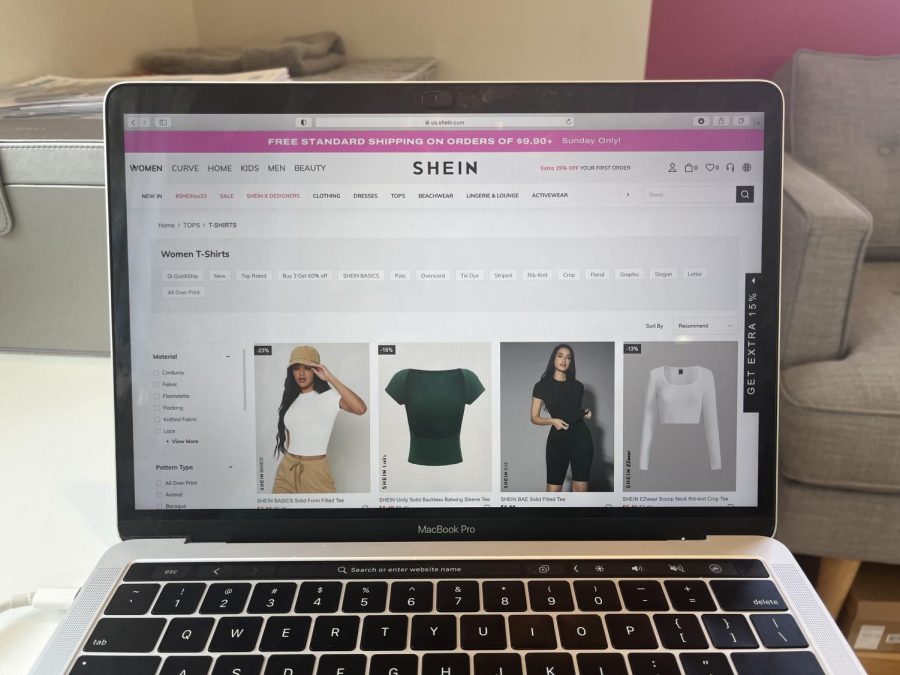Buying cheap comes with a high price: The evil of fast fashion
The Catalyst / Kate Davidson
Shein is among the top convenient and affordable brands that contributes to the crisis that is fast fashion.
Consumers scour the websites of the most popular clothing brands, in search of the perfect outfits for concerts, a night out and special events. Zara, Shein, PrettyLittleThing and Urban Outfitters are among the popular destinations for these searches. While these brands are convenient and affordable, they come with a higher cost. This is fast fashion.
Fast fashion is when low-priced, stylish clothing moves quickly from design to retail stores to meet the latest trends. Fast fashion brands are continuously introducing new collections. Typically, clothing produced in this way is mass produced and made of low-quality materials such as synthetic fabrics in order to reduce costs for the consumer and increase profits for the brand.
Fast fashion thrives in the world of social media. Cheap and trendy clothing is made directly in response to what is in style on platforms such as TikTok and Instagram. Each week, social media presents the newest “must-have” clothing item, which retains popularity for a short period of time, until it is replaced with the next item introduced.
In this narrow production window, companies are likely to pay less attention to environmental concerns and working conditions because products need to be made so quickly.
Each year, more than 11 million tons of textile waste gets thrown away in the U.S. alone. Textile dye is a top polluter of the world’s water sources. The clothing is made from synthetic materials that often contain pesticides, lead and other dangerous chemicals. When the clothes are thrown away into the landfill, the chemicals contaminate the land and release harmful toxins into the air. Furthermore, the industry’s carbon footprint contributes to global warming.
In addition to environmental effects, the fashion industry impacts human life. The majority of clothing in the U.S is made overseas, where exploitation of cheap labor and human rights is all too common. Garment workers endure harsh working conditions, earn low wages, and are denied human rights and protections. Today there are around 40 million garment workers around the globe. These workers, mostly women and children, are some of the lowest paid workers in the world.
Although today’s society makes it difficult to shop sustainably, there are attainable options. Buying clothing from environmentally conscious brands, shopping at thrift stores and prioritizing quality over quantity can help minimize the detrimental effects of fast fashion.
“I don’t like spending money on clothes I’ll only wear once, and some good options for this are to rent items, borrow from friends and thrift,” explained senior Caitlynn Reynolds. “While it takes more time, another fun option is to DIY clothes. Last year for prom, I wanted to create something unique and with my own time and labor, I challenged myself to make my own prom dress and it turned out great”
When you are shopping for the newest clothing item or accessory, consider the broader implications of your choice. You should first ask yourself whether or not you truly need it. Then, decide whether there is a more sustainable option for the item. Each purchase decision you make, though it may seem small, can have serious negative consequences, especially when you are buying with the goal of keeping up with every trend.





